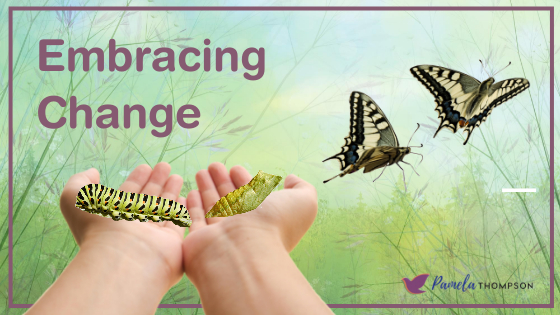For some time, I have questioned whether we can truly manage change whether it be in our personal, or our professional lives.
I would like to propose that instead of “managing change” we explore a new way of thinking about change. Managing something to me means we have control over it. Do we really have control when something comes at us out of the blue or is imposed on us such as when we get laid off or when our partner says they no longer love us?
What if you made friends with change and talked about embracing change rather than managing it? What might that look and feel like?
I have developed a 5-step Art of Change Framework underpinned by the belief that embracing change is a creative process that opens us up to new possibilities and based on the metaphor that life is a dance.
This framework includes a process where you explore how you typically respond to change and why, and then receive tools and a framework to guide you on your transition journey.
The Art of Change Framework is underpinned by evidence from neuroscience, organizational development, the health-promoting and healing benefits of the arts, and eastern psychology. It is also based on my own journey and work with consulting and coaching clients on 5 continents for over 30 years.
In this process I draw on the work of William Bridges, an organizational theorist[1]. He differentiates between a life change and a life transition. He says that a change is external and situational; something that is tangible that we can see such as a separation agreement or a pink slip. Whereas a transition, is the internal psychological work we do to reorient and readjust ourselves to the new external reality.
Many people make the change but don’t do the transition work. This often results in them repeating the same patterns in their lives and remaining unhappy and unfulfilled. An example is someone who always goes after positions for the money without taking the time between jobs to identify their passions and their core values. Or a woman or man who marries three, four or five times, often choosing a spouse that looks similar to the previous one, and after the honeymoon phase revisiting the same issues as the previous relationships and remaining unhappy and unfulfilled or moving on to the next one. This is because they haven’t taken the time between relationships to find out who they are and what they truly value in a relationship.
We are physiologically hard-wired to fear change. Our amygdala (part of our brain) is continually scanning our environments for things that are different; things that might be perceived as a change. When it perceives a threat, it causes our body to release stress hormones that put us into fight, flight or freeze. In none of these modes are we in a position to make thoughtful decisions.
When we fear change, we tend to resist it and that has negative impacts on our bodies, our minds, our relationships, our workplaces and our bottom lines. If you’d like to learn more about the negative impacts of resisting change and the 5-step Art of Change Framework visit https://pamela-thompson.com.
I welcome your comments below. Do you believe we can manage change?
[1] Bridges, William, TRANSITIONS Making Sense of Life’s Changes, 2004.

Yes absolutely. I have worked as a either a business analyst looking externally at clients needs and as a Test consultant looking internally at systems to execute change all my life. I’m fascinated with resistance to change and peoples fear of failure. I’m invested in understanding the negative trigger cycles and the unconscious biases, assumptions, memories which all contribute to fear and the negative reactions which induce yet more fear in others.
Hi Trevor, Thanks for your comments. It sounds like you’ve learned alot about change in the variety of roles you’ve played. I think we can strive to understand why people resist change but I’m not certain that we can manage their behaviors and hence manage change. I welcome further thoughts on this.